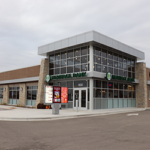Banks switch gears for virtual financial literacy initiatives
With the ongoing pandemic, banks’ financial literacy initiatives have switched gears — visiting schools and giving tours of banks are no longer possible as many schools have gone virtual and banks have shut their doors to large groups. Despite the setbacks, banks are finding new avenues to teach financial literacy — a skill that is crucial at a time when the Federal Reserve reports 70 percent of adults would not be able to pay an unexpected $400 expense. [Continue]










